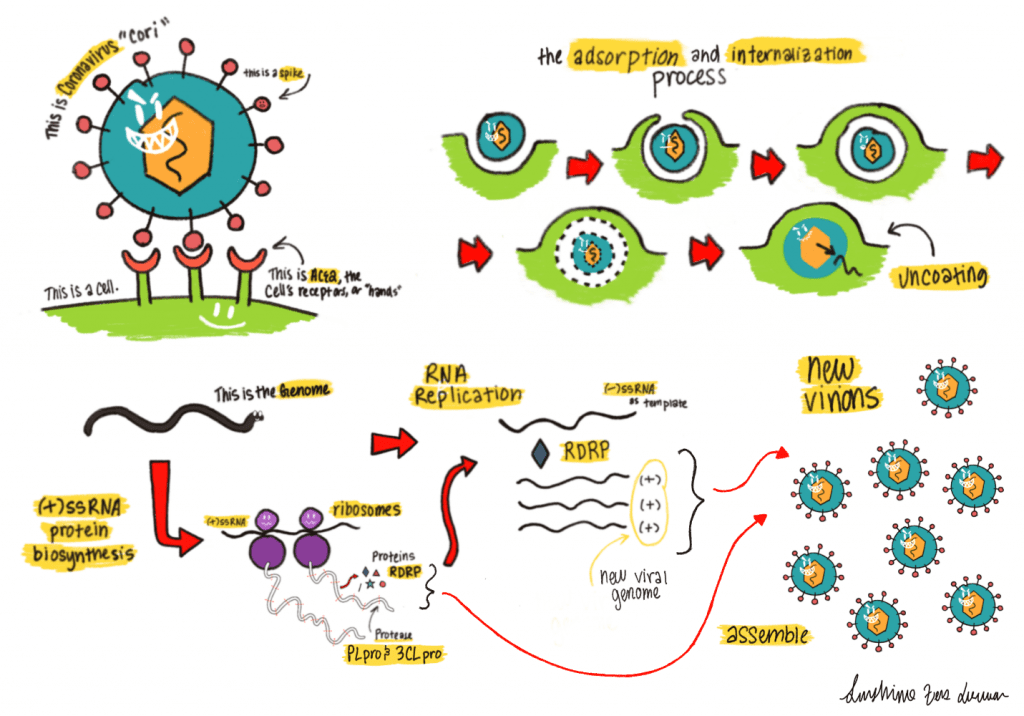Researchers around the world are tirelessly working to provide treatment options for the newly emerged 2019 novel coronavirus (2019-nCoV), an infectious virus that is thought to have originated in a Wuhan seafood market in December of last year. As the number of infected people continues to rise — as of February 4, 2020, the number surpassed 20 000 people, with current numbers estimated at 20 530 — and with the current trajectory of the outbreak unknown, understanding the virus’ biology, as well as public health and medicinal measures, will be needed to contain the spread and optimize patient care.
The first genome sequence of 2019-nCoV was made public in early January, which has led to diagnostic tests for the virus, as well as enhanced knowledge regarding its biology and evolution. And while efforts are being spent toward developing a vaccine, researchers from Texas A&M University suggest that we could learn from the past to produce urgently needed treatment options for those already affected.
The team was led by Wenshe Liu, and in their study — published in ChemBioChem — the researchers suggest four potential drug candidates that could be used to treat patients currently suffering from the virus. “Although it is essential to develop vaccines, small molecules, and biological therapeutics to specifically target the 2019-nCoV, it is unlikely that any effort made at the moment will benefit patients in the current outbreak,” said the authors.
An efficient approach to drug discovery is to test whether existing therapeutics for similar viruses are effective in treating current viral infections.
“2019-nCoV shares 82% sequence identity with severe acute respiratory syndrome-related coronavirus (SARS-CoV),” they stated, “and more than 90% sequence identity in several essential enzymes. What we have learned from several medicinal chemistry studies about SARS-CoV and the Middle East Respiratory Syndrome (MERS-CoV) may be directly used in helping us treat the 2019-nCoV.”
Drugs such as ribavirin, interferon, lopinavir-ritonavir, and corticosteroids, have been used previously to treat SARS or MERS, and may have potential in improving patient outcomes during this current outbreak.
Similar to the SARS, the current coronavirus, 2019-nCoV, contains a large “spike protein”, which it uses to bind to host cells and then gain entry through the cell’s membrane. The receptor these viruses target is called angiotensin-converting enzyme 2 (ACE2). Vaccines were developed for SARS which specifically target the spike protein and ACE2 receptor, and while amino acid sequences of spike proteins in 2019-nCoV and SARS do show some overlap, mutations in the current virus might lower the efficacy of previously developed therapeutics. However, similar ideas may be applied in developing 2019-nCoV vaccines.

“Alternative approaches are to directly use the 2019-nCoV [receptor binding domain] in combination with immunity-promoting agents to trigger the body to develop antibodies for neutralizing the virus … Before any potent therapeutics to neutralize the 2019-nCoV-[ACE2 receptor] interaction are available, a possible quick solution to block this interaction is to use [peptides derived from the] 2019-nCoV receptor binding domain and their combination cocktails.”
Once inside the cell, 2019-nCoV attaches to the host cell’s ribosome — a cell’s protein factory — where it overrides the cell’s machinery to produce two polyproteins. RNA viruses in many families (including the coronavirus family) express their genomes using the synthesis and subsequent cleavage of precursor polyproteins within a host cell. After the coronavirus’ polyproteins are produced, two enzymes — specifically, coronavirus main proteinase (3CLpro) and the papain-like protease (PLpro) — are known to participate in processing the polyproteins into smaller components used for producing new viruses. In addition, in order to replicate the RNA genome, the CoV encodes an RNA-dependent RNA polymerase (RdRp), which is a replicase or an enzyme that catalyses the synthesis of a complementary RNA molecule using template.
Therapeutics currently targeting the previously mentioned spike protein, RdRp, 3CLpro, and PLpro enzymes are possible treatment options for 2019-nCoV, according to the authors of the study. The team therefore proposes four known potential drug candidates, which were previously used to treat SARS. These include an ACE2-based peptide; the antiviral drug remdesivir; the 3CLpro inhibitor, 3CLpro-1; and a novel vinylsulfone protease inhibitor.
“Since remdesivir is a drug undergoing a clinical trial, the authority in China may negotiate with Gilead in possible use of this drug for patients suffering with the2019-nCoV,” say the authors.
Given what we have learned from similar outbreaks, it is hoped that application of current therapeutics will not only aid in alleviating the suffering of those currently affected, but will also help in the development of broad spectrum anti-coronaviral agents for future epidemics.
Viewpoint article found at: W. Liu, et al. Chem Bio Chem, 2020, doi.org/10.1002/cbic.202000047
Updated Feb 6 to include figure














